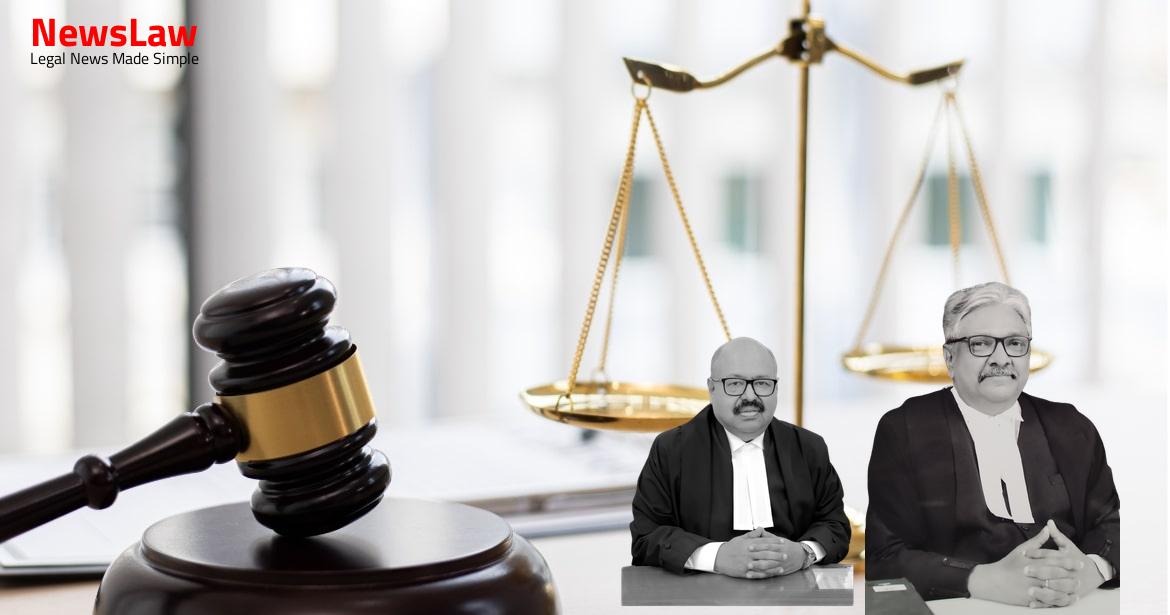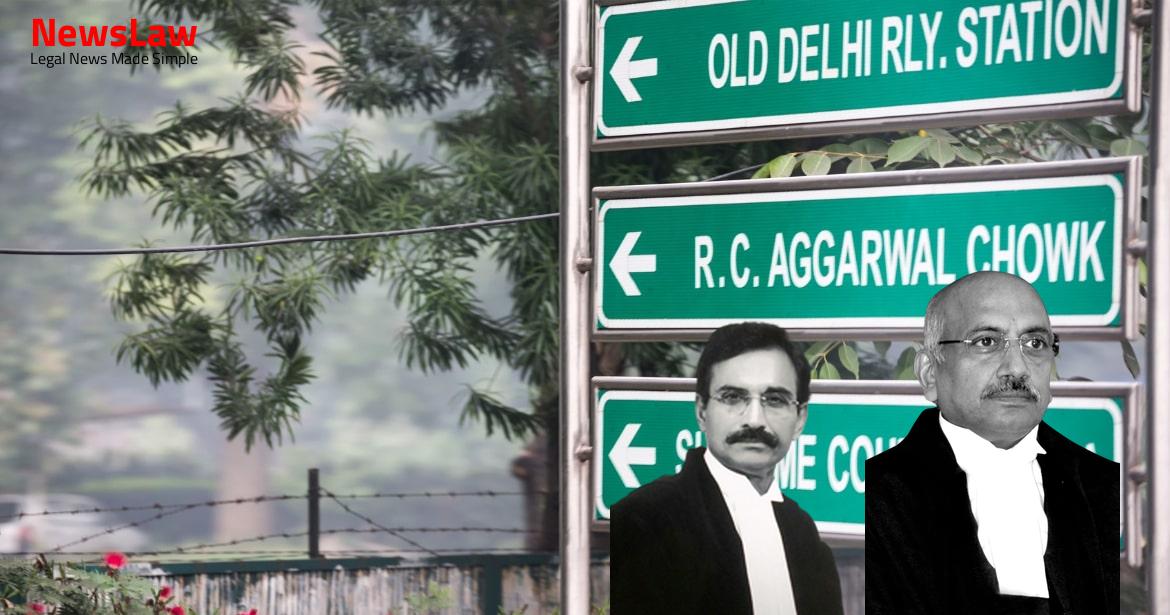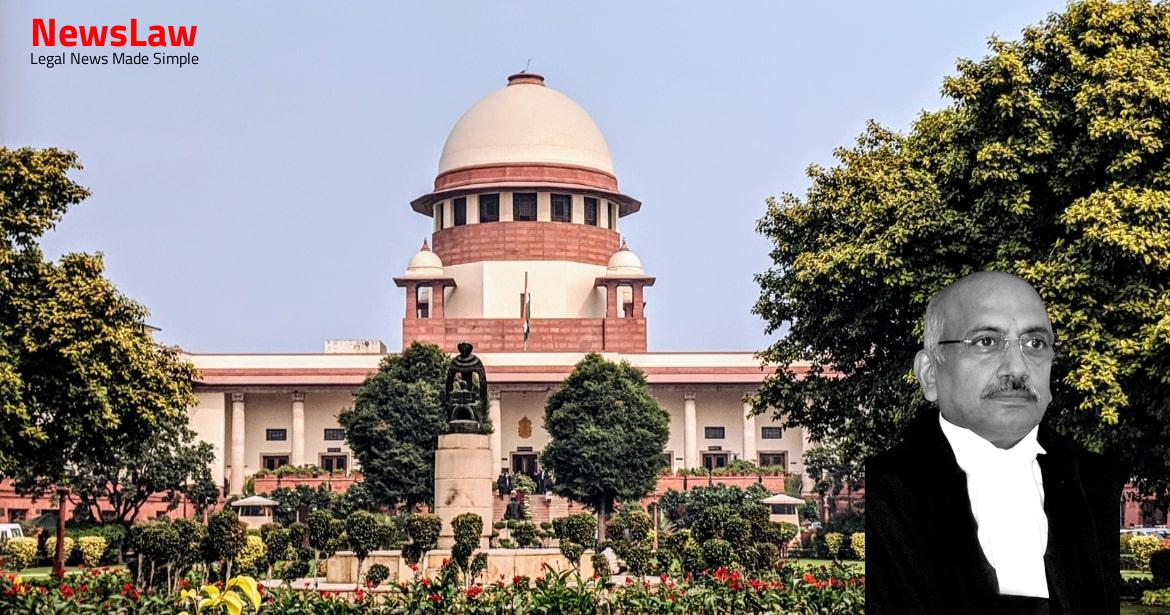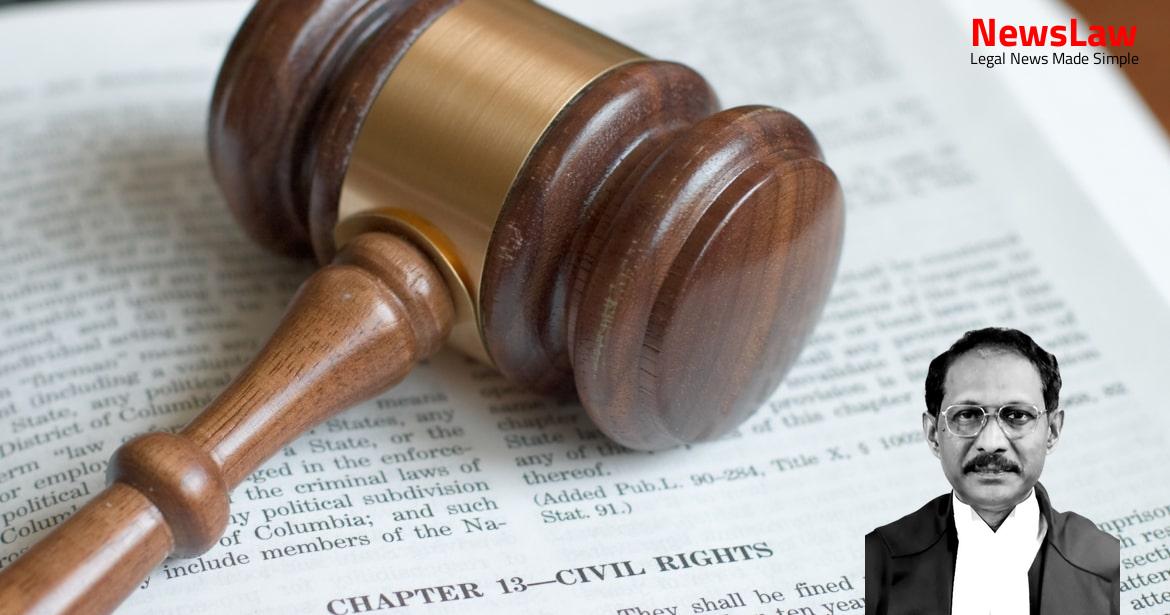Explore the in-depth legal examination of property partition and ouster within the context of an inheritance case. The court’s expert analysis delves into the nuances of co-ownership, adverse possession, and claims of exclusion among heirs. This case delves into the complexities of familial property disputes and the legal principles governing inheritance rights. Stay tuned for a comprehensive overview of the court’s legal analysis in this intriguing case.
Facts
- Plaintiff Nos. 1 and 2, along with defendant Nos. 1 to 3, are legal heirs of the deceased R.M. Patil.
- They are entitled to a 1/5th share each in items 1 to 4 of the suit schedule properties acquired by R.M. Patil during his lifetime.
- Reliefs sought include partition and separate possession of their 1/5 share in the properties, accounts of rentals received by the 1st defendant, inquiry into current rentals, mesne profit, and other appropriate reliefs.
- The trial court partially granted the suit, with prohibitory injunction in favor of the second plaintiff.
- The suit was filed by R.M. Patil’s sister and sister-in-law.
- RFA No.1296/2005 was filed by the plaintiffs and RFA No.1369/2005 by the second defendant in the suit.
- RFA No.1503/2005 was filed by the appellant, and the claim of the plaintiff for partition and other reliefs was dismissed.
- The reliefs claimed by defendant Nos. 1, 2, and 3 were also disallowed.
- The High Court allowed the appeal filed by the plaintiffs and the second defendant.
- The appeal filed by the first defendant was dismissed.
- The High Court decreed the suit by setting aside the judgment dated 08.07.2005 in OS No.7944/2003 related to the partition of suit schedule properties.
- The appeals were allowed specifically concerning the partition of item numbers 1 to 4 of the plaint schedule properties.
Also Read: Judicial Analysis on Back Wages in Employee Caste Verification Case
Issue
- Whether the plaint schedule properties are separate properties of Shri. R.M. Patil
- Need to determine if the properties are self-acquired and separate
- Evidence and documentation will be crucial in making this determination
Also Read: Interpretation of Suspension Rules in Employment Case
Arguments
- Appellant’s counsel argues that properties yielding income were utilized to purchase the plaint-schedule properties.
- Counsel asserts that all properties, including those in family members’ names, should have been listed in the plaint schedule.
- Appellant claims exclusive possession of a house and relies on evidence of a Notice issued in June 1991.
- Non-joinder of necessary parties, specifically the missing brother of the appellant’s father, is highlighted as a ground for potential dismissal of the suit.
- The value of library books purchased by late R. M. Patil is contested, with plaintiffs alleging Rs.1 lakh value but providing no documentary evidence.
- Appellant’s counsel argues that it would be illegal and inequitable to evict the appellant, especially considering other siblings have their own houses.
- The lineage and family structure of Shri Marigowda Patil and his sons, including the roles and entitlements of each family member, are outlined in the argument.
- The appellant’s entitlement to certain items in the Plaint Schedule Property is emphasized.
- Mr. S. N. Bhat, representing the respondents, argues against the appellant’s claim of exclusive ownership of certain properties.
- He highlights inconsistencies in the appellant’s case, suggesting that the claim of ouster is unsubstantiated.
- Mr. Bhat points out that the appellant was not in exclusive possession of the entire property, as claimed.
- Referring to specific exhibits, Mr. Bhat challenges the value attached to certain pieces of evidence by the Trial Court.
- He argues that the alleged properties in question have not been adequately proven during the proceedings.
- Mr. Bhat notes that the appellant’s claim to a 1/4 share implies acknowledgment of co-ownership with the other siblings.
- Regarding the non-impleadment of another branch, Mr. Bhat dismisses the notion of prejudice to public interest in this case.
- He highlights that the building under dispute actually consists of two floors, contradicting some of the appellant’s assertions.
- Mr. Bhat emphasizes that the other co-owners do not contest the title of the first plaintiff, weakening the appellant’s claim.
- Lastly, he points out that the suit could not have been brought before 1977 due to the timing of Sh. R. M. Patil’s demise.
Also Read: Legal Analysis of Assignment and Ratification in Property Law
Analysis
- The appellant’s plea of partial ouster is deemed legally insufficient to extinguish the title sought by the principle of ouster.
- The non-inclusion of properties standing in the name of the second defendant was raised as an issue, especially regarding items 2 and 3 in the schedule.
- The appellant’s contention that the properties were acquired with joint family funds is questioned, as the evidence and pleadings indicate otherwise.
- The appellant’s attempt to set up adverse possession or ouster in 1977 is deemed invalid, lacking the necessary elements.
- Not joining all relevant parties may be fatal, as seen in the context of the case.
- The appellant’s claims of possession and ownership do not align with the evidence presented, and his averments do not hold up under scrutiny.
- The lack of specific documentation and failure to produce evidence weakens the appellant’s case regarding property ownership.
- The principle that partial partition is generally disfavored is acknowledged, but exceptions exist based on circumstances and interests of justice.
- Overall, the analysis points towards inconsistencies in the appellant’s pleadings, lack of conclusive evidence, and the insufficiency of legal claims.
- Order II Rule 3 of the Code of Civil Procedure allows a plaintiff to unite several causes of action against the same defendant in the same suit.
- Plaintiffs with jointly interested causes of action against the same defendant can also unite them in the same suit.
- The jurisdiction of the Court for a suit where causes of action are united depends on the amount or value of the aggregate subject-matters at the date of instituting the suit.
- Order I Rule 3 of the Code of Civil Procedure addresses the persons who may be made parties in a suit.
- Adverse possession should be nec vi nec clam nec precario, meaning without force, secrecy, or permission.
- Notorious exclusive possession by one co-heir in hostility to others with no steps taken by the excluded heir to vindicate their title may lead to an inference of ouster.
- Evidence of open assertion of hostile title, exclusive possession, and knowledge of other co-owners is needed to establish ouster between co-heirs.
- Possession of a property by one co-sharer is presumed to be on behalf of all co-owners unless there is clear ouster.
- Mutations in revenue records alone do not amount to ouster; there must be a clear denial of title.
- Mere continuation of possession by a co-owner does not suffice for ouster; it is presumed to be on the basis of joint title.
- Order II Rule 3 allows the plaintiff to join different causes of action in a single suit.
- Non-participation in rent and profits by a co-heir does not necessarily indicate ouster.
- Ouster in the case of co-owners does not require actual driving out, but rather involves specific elements to be established.
- The appellant’s complaint is based on being a Senior Citizen aged about 80 years and potentially being adversely affected compared to other siblings.
- The appeals are only against the preliminary decree declaring shares, not the final distribution of properties.
- The question of property allotment will be addressed in the final decree proceedings.
- The argument regarding the appellant being left with nothing does not hold merit in the present context.
Decision
- Parties are to bear their own costs in the circumstances of the case.
- Appellant is responsible for raising contentions regarding the actual division of properties.
- No merit found in the appeals, resulting in their dismissal.
- Parties are responsible for their respective costs.
- The claim for an injunction by plaintiff No. 2 is granted with specific directives.
Case Title: B.R. PATIL Vs. TULSA Y. SAWKAR (2022 INSC 165)
Case Number: C.A. No.-002652-002654 / 2013



